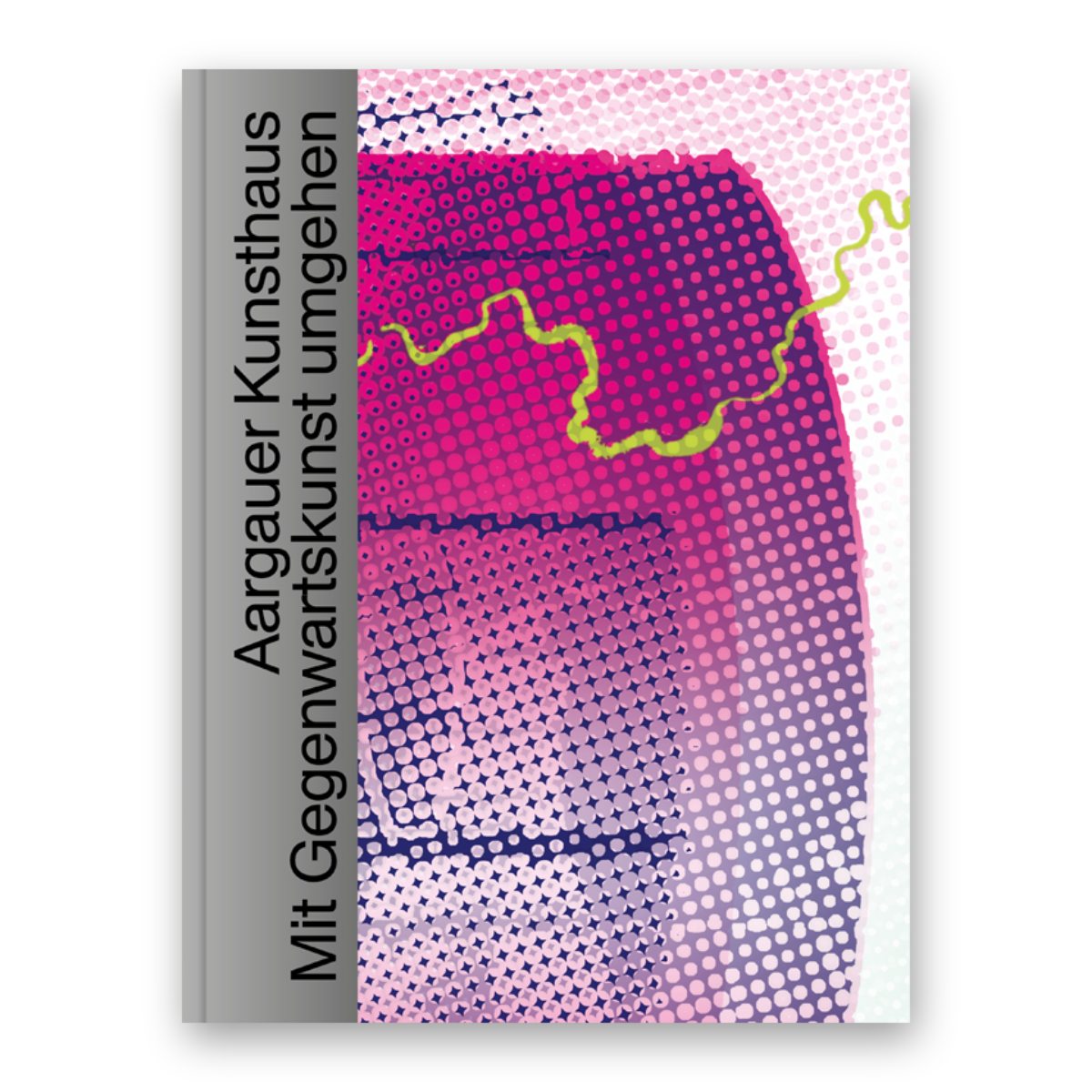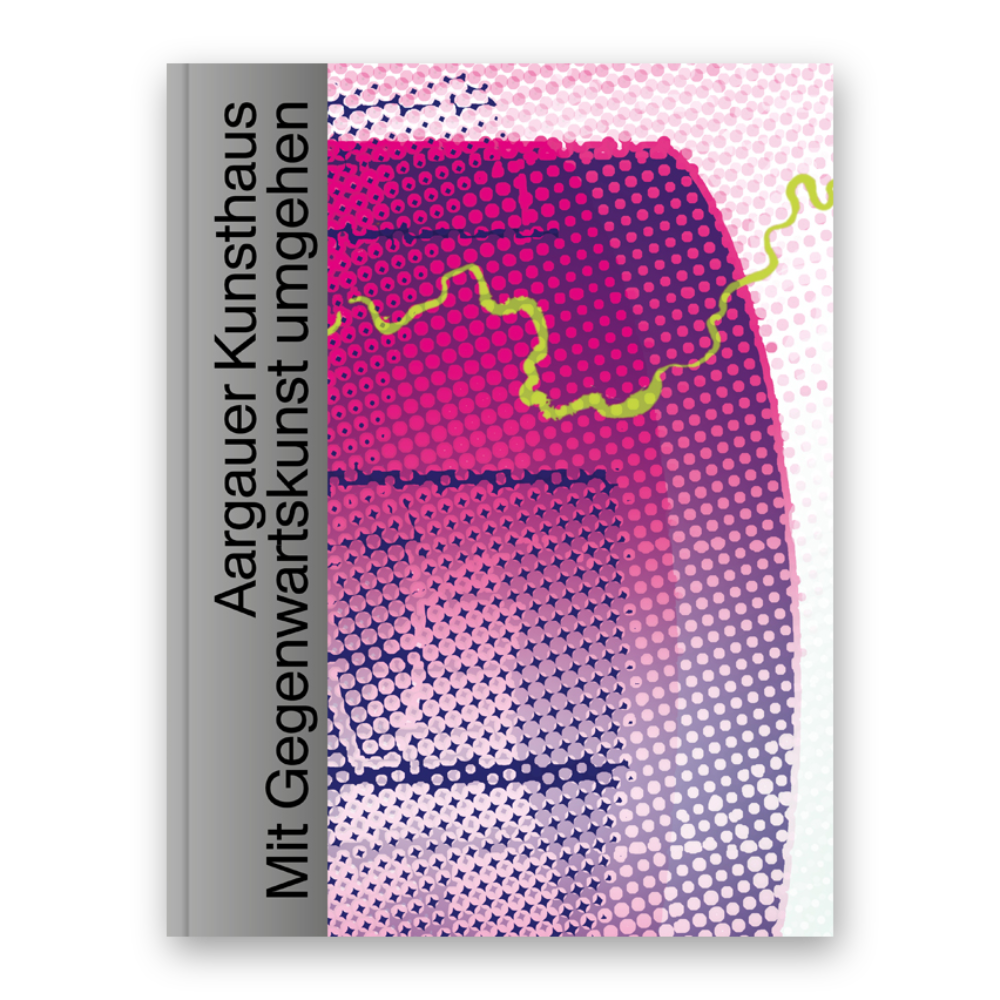Collection 24
It is a journey through twenty years of art presence. It is a reference work with dates, titles and publications on all exhibitions from 2003 to 2023. With an index of names and numerous illustrations, the book (and its digital contemporary art double) offers itself as a key to the collection of the Aargauer Kunsthaus. Above all, however, Mit Gegenwartskunst umgehen [working with contemporary art] is an attempt to reflect on the tasks of an art institution in the here and now.
 i
i
The book can be read from its centre. A generously proportioned series of images presents various situations, from the white cube to the black box, made possible by Herzog & de Meuron’s extension with its mobile wall system. In 2003, a floor work by Adrian Schiess meets Balthasar Burkhard’s Alpine panorama or paintings by Renée Levi, which are set up in standing rolls. Simulated brickwork on the window panes and a dense carpet of plants turn the central atrium into a Hortus Conclusus under the direction of Ugo Rondinone in 2010. Emma Kunz’s compositions compete with a neon work by Mai-Thu Perret in 2021. The fact that the installation views are printed on silvery paper, with the edges falling off, exaggerates the documentation: in the grazing light, the concrete floor and picture frames fall into each other as metallised surfaces, all colour turns grey to black. In this way, photography shows that architecture and artistic practice are constantly intertwined. At the same time, it speaks of appearance and disappearance – two constants in dealing with contemporary art.
In an overarching historical section and a section focussing on practice and case studies, the texts look at what the Aargauer Kunsthaus has and what it is doing to ensure the longevity of its own holdings and to meet the demands of a dynamic exhibition business. The Kunsthaus is located in the history of art museums: from a ‘national’ place of normative learning, they have changed into a space for experimentation and leisure activities – with corresponding models in the structural design. In keeping with the present, exhibitions also repeatedly draw on older pictures, reveal elective affinities with younger art or trace contemporary issues in the work of earlier generations. What the official canon left unseen in terms of uncanny wit, even ‘absurdity’ in the work of female artists, invites us to sharpen our gaze, which has become tame under convention, for thematic and stylistic cracks in the supposed continuum.
In 1966, a volume entitled Umgang mit Kunst [working with art]. Georg Schmidt, Basel museum man and art mediator, saw it as his duty in all his speeches and writings to open up access to modern and recent art to a broad public. The title now available from Aarau is characterised by a different spirit, even though it harks back to Schmidt. Since art has existed on data carriers, since it can take on different formats depending on the location or prepare a performance as a notation, its ‘original state’ has become mobile and artists have also become partners of the team working at the Kunsthaus. Together, they evaluate new technological forms of presentation or offer a hand for hangings that the original art may not have envisaged. The rules of museum work are open to variables. For everyone – restorers and curators, the technical team, artists and the museum itself – ‘working around’ means remaining flexible.
 i
i
Mit Gegenwartskunst umgehen is an extract from the thinking laboratory of an institution that – collection and art gallery in one – has to constantly relate its mainstay and mainstay to each other. This assessment of its position in book form was produced to mark the 20th anniversary of its new premises and is characterised by seriousness and due diligence. It is valuable for all those who are interested in collecting and exhibiting (not only) in the public sector. It provides material for an understanding of museum work that sheds its authoritative status and finds its strength in exchange and facilitation. There is something incontestable about the focussed inward view. The new publication thus embodies the ‘special status of art in the institution of the museum’ (p. 21) quite naturally and perhaps unintentionally: Art gives the collection a hard time; in exhibitions it breaks the boundaries of spaces, disciplines and sometimes budgets. By diligently describing it, we gain tools – and yet in the end we long for visions to fizzle out of the building.
You can’t see it, but when you know it, it’s beautiful: Nimm Wind mit [take up wind] is the name Michael Günzburger gives to the lithograph whose enlarged grid determines the book cover. The sheet shows a drill core, almost transparent, with a dark spiral in the centre: it is the round staircase in the foyer of the Aargauer Kunsthaus. And it lies diagonally.
A text by Isabel Zürcher


